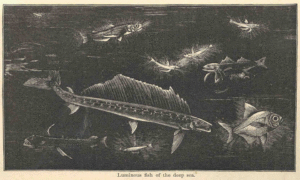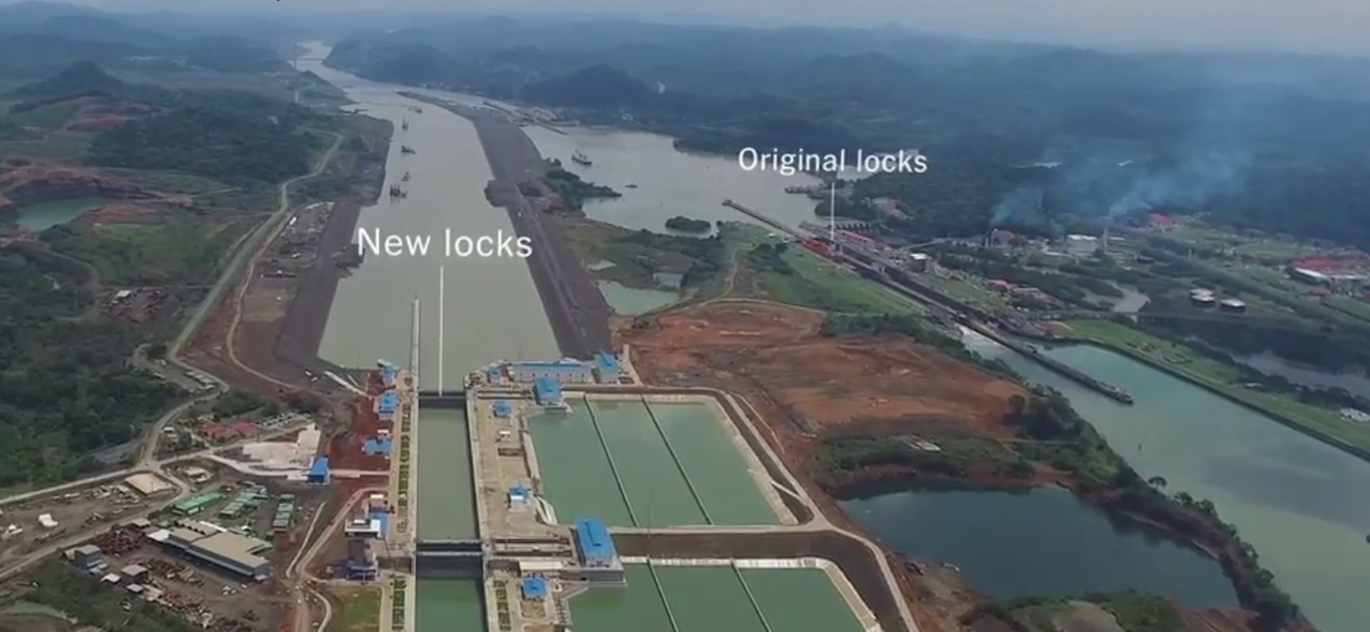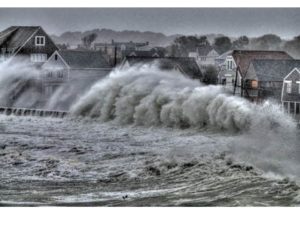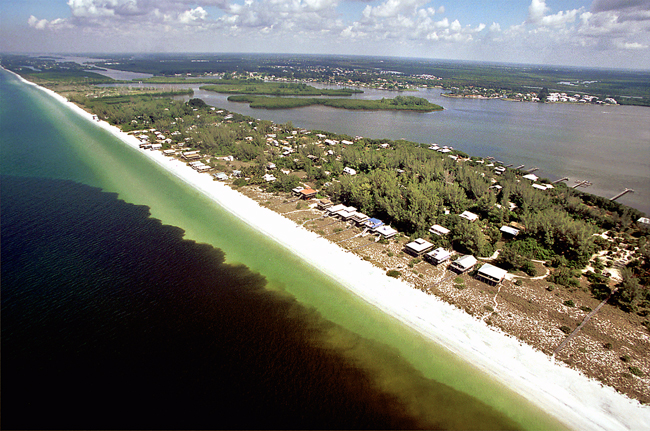Projects
 “Now boys…hold the net steady and remember our rule—not to kill more than we can actually use…”
“Now boys…hold the net steady and remember our rule—not to kill more than we can actually use…”
Admonition (and figure) appearing in Along the Florida Reef (1892) by Charles Frederick Holder. Holder, who was a naturalist, big-game fisherman, and conservationist, wrote several books to help develop an ocean literacy over a century ago. The OTZ Project at WHOI asks fundamentally whether humans can benefit from a remote, difficult-to-access area of the ocean and its extraordinary resources in a sustainable way.
The Ocean Twilight Zone
Collaborators: OTZ Scientific Team (WHOI), Hoagland P (WHOI), Jin D (WHOI)
Sponsor: The Audacious Project
The midwater, or the “ocean’s twilight zone“ (OTZ), is renowned for its unusual life forms, including 13 species of bristlemouths, which are thought to be the most numerous vertebrates on earth. Irigoien et al. (2014) have raised the median estimate of midwater fish biomass by an order of magnitude to ~11-16 Gt. Some observers have suggested that these fish constitute an enormous potential source of protein that literally could “feed the world.” Diel vertical migrations (DVM) of zooplankton lead to the consumption of epipelagic phytoplankton, and the zooplankton, in turn, are consumed by the mid-water’s fish. This ecological cycle comprises one central element of a “biological carbon pump” (BCP) that leads eventually to the very long-term sequestration of carbon in deep waters or on the deep seabed. While the net amounts of carbon sequestered in this way are highly uncertain, estimates range between 4-12 Gt annually.
The OTZ can be conceptualized as a stock of differentiated natural capital, subject to capital gains or losses, that may yield flows of benefits, termed “ecosystem services.” In any future period, the economic value of the natural capital is the discounted value of service flows and capital gains, where the discount rate is adjusted up (down) by removals from (additions to) the stock (viz., Fenichel et al. 2018). In this work, we have been focusing on developing estimates of the economic scales of flows of OTZ ecosystem services. Understanding the benefits that are associated with these services is fundamental to assessing the opportunity costs of proposed activities that might mitigate those benefits, such as unregulated fishery exploitation or the effects associated with climate changes in the ocean, including temperature increases, stratification, decreased dissolved oxygen levels, acidification, or shifts in biological diversity.
*Dowd S, Chapman M, Koehn LE, Hoagland P. 2022. The economic tradeoffs and ecological impacts associated with a potential mesopelagic fishery in the California Current. Ecol. Appl. e2578. [Paper]
*Payne S, Hoagland P. 2022. A twilight zone episode: historical expansion of the Soviet Union’s fishing fleet and the exploitation of mesopelagic fisheries in the Southern Ocean. Oc. Yrbk. 36:526-549. [Paper]
*Finkelstein AR, Hoagland P. 2020. The lungs of the earth: shifting a metaphor from superstition to science. Georgetown J. Int’l Aff. (13 October). [Paper]
Hoagland P, Jin D, Beaulieu S. 2020. A primer on the economics of natural capital and its relevance to deep ocean exploitation and conservation. In Baker MC, Ramirez-Llodra E, Tyler PA, eds., Natural Capital and Exploitation of the Deep Sea. Oxford, UK: Oxford University Press, Ch. 12. [Book Chapter]
Jin D, Hoagland P, Buesseler K. 2020. The value of scientific research on the ocean’s biological carbon pump. Sci. Tot. Environ. 749:141357. [Paper]
Hoagland P, Jin D; Holland M, Kostel K, Taylor E, Renier N, Holmes M. 2019. Value beyond View: Ecosystem Services of the Mesopelagic. Woods Hole, MA: Ocean Twilight Zone Project, Woods Hole Oceanographic Institution, 35 pp. [Report]
*Dowd S, Hoagland P. 2019. Conserving a sea of shadow and substance: should there be a moratorium on harvesting twilight zone fish? Woods Hole, MA: Marine Policy Center, Woods Hole Oceanographic Institution [Poster].
Hoagland P. 2019. The ecosystem services of the ocean's twilight zone. Marine Biodiversity & Conservation Special Seminar. Avery Point, CT: Department of Marine Sciences, University of Connecticut [Presentation].
Hoagland P, Jin D. 2018. Scaling the benefits and risks to the ecosystem services of the midwater. ICES Annual Science Conference. Hamburg, Ger. (September 24-27) [Presentation and Poster].

In June 2016, a new set of locks was opened through the Panama Canal to allow the passage of larger "New Panamax" container ships, drawing up to 50 feet. Estuaries along the US East and Gulf coasts are being deepened to accommodate these ships, leading to potential changes in the supply of traditional ecosystem services. Source: Bogdanich W, Williams J, Mendez E. 2016. The new Panama Canal: a risky bet. New York Times (June 22).
Toward sustainable urban estuaries in the Anthropocene
Collaborators: Geyer R (WHOI); Chant R (Rutgers), Hoagland P (WHOI), Parsons G (Delaware), Quirk T (LSU), Ralston D (WHOI), Sommerfield C (Delaware)
Sponsor: NSF Coastal Science, Engineering, and Education for Sustainability (Coastal SEES)
We are concerned with the characterization of sustainable paths for urbanized estuaries in the United States, focusing on the Delaware and Hudson (including New York Harbor, Raritan Bay, Newark Bay and associated sub-estuaries). These two estuaries differ significantly in their environmental characteristics and distributions of ecosystem services. Thus, although both are located in the same geographical region, the ranges of physical and socio-economic features will enable us to learn much about potential differences in sustainability trajectories. The overall goals of this project are to determine how anthropogenic changes in estuarine morphology affect sediment fluxes and morphology in estuaries and to understand how consequent shifts in the physical regime affect estuarine sustainability, based on a combination of environmental and socio-economic factors.
Hoagland P, Beet A, Ralston D, Parsons G, *Shirazi Y, *Carr E. 2020. Salinity intrusion in a modified river-estuary system: a framework for integrated source-to-sea management. Front. Mar. Sci.. [Paper]
*Carr EW, *Shirazi Y, Parsons G, Hoagland P, Sommerfield CK. 2017. The economic value of carbon sequestration by wetlands in the Delaware Estuary: historic estimates and future projections. J. Environ. Mgmt. 206:40-50. [Paper].
*Shirazi Y, *Carr EW, Parsons GR, Hoagland P, Ralston DK, Chen J-L. 2019. Increased operational costs of electricity generation in the Delaware River and Estuary from salinity increases due to sea-level rise and a deepened channel. J. Environ. Manag. 244:228-234. [Paper].

Atlantic sea scallop (Placopecten magellanicus). Source:
Climate-fisheries dynamics: individual-based, end-to-end, sea scallop model with socioeconomic feedbacks
Collaborators: Ji R (WHOI); Beardsley R (WHOI), Chen C (UMass Dartmouth), Davis C (WHOI), Hart D (NEFSC), Hoagland P (WHOI), Jin D (WHOI), Lee M-Y (NEFSC), Thunberg E (NEFSC), Shank B (NEFSC)
Sponsor: NOAA Coastal and Ocean Climate Applications (COCA)
In the large marine ecosystem comprising the Northeast Shelf, climate changes will impact the geographic distribution and biomass of major commercial fisheries significantly, with cold-water species redistributing northward or even declining due to warming ocean temperatures, ecosystem regimes shifting as a result of a freshening from Arctic melting, and ocean acidification reducing shellfish stocks. In this context, the analytical coupling of climate-forced fisheries ecosystem models to adaptive management strategies with socioeconomic feedbacks is necessary but has been hard to achieve. Our multi-disciplinary team is engaged in linking an existing climate-forced, high-resolution, 3-D hydrodynamic model to (i) a lower food web model; (ii) a full-lifecycle, individual-based model of sea scallops; (iii) and an adaptive fisheries management model with socio-economic feedbacks.

Minot Beach Community, Scituate, Massachusetts, during a nor'easter in 2010. In the face of an accelerating sea-level rise, itself the consequence of climate change, northeast storms ("nor'easters"), tropical cyclones (hurricanes), storm surges, and perihelic-perigean spring tides ("king tides") are leading increasingly to coastal flooding and erosion. The demand for shorefront properties abetted by significant institutional incentives that encourage a human presence on the coast puts many coastal residents at significant risk. Adaptation involves difficult choices among protection, retreat, or abandonment of property. Source: www.panoromio.com/photo/34182602
Along-coast coupling of shoreline protection
Collaborators: Ashton A (WHOI); Duff J, (UMass Boston), Hoagland P (WHOI), Jin D (WHOI), Kite-Powell HL (WHOI), Trueba J (Montclair State)
Sponsors: NSF Coupled Nature-Human Systems (CNH); NSF Coastal SEES; Northeast Regional Sea Grant Consortium
As shorelines recede with rising sea levels, and as coastal regions become more developed, more communities are considering costly engineering solutions to address coastal change. Given that the shoreline is strongly coupled along-coast by wave-driven coastal sediment transport, actions taken locally to protect residences, businesses, and public infrastructure can have far-field effects affecting future protection. Focusing at the scale of the littoral cell--the alongshore-connected series of geologic environments from upcoast sediment sources (headlands and bluffs) to down-drift coastal stretches--with a temporal scale of 2-4 generations (50-100 years), this research aims to characterize the bi-directional interactions between the natural processes that sculpt the shore and local human responses to shoreline change. We hypothesize that coastal Massachusetts, with its many spatially compact (order ~10km) littoral cells, and the more extensive barrier islands of the New Jersey coast together provide an excellent comparative database of past coupled responses to coastal change given the history in both locales of implementing a wide array of engineering adaptations that have affected shoreline change and, thereby, future adaptations.
Jin D, Hoagland P, Ashton A. 2021. Risk adverse choices of beach width under environmental uncertainty. Nat. Res. Model. e12324. https://doi.org/10.1111/nrm.12324
*Kolodin J, Lorenzo-Trueba J, Hoagland P, Jin D, Ashton A. 2021. Engineered coastal berm-dune renourishment in New Jersey: can coastal communities continue to hold the line? Anthrop. Coasts 4:193-209. https://cdnsciencepub.com/doi/pdf/10.1139/anc-2020-0024
*Janoff AM, Lorenzo-Trueba J, Hoagland P, Jin D, Ashton A. 2020. From coastal retreat to seaward growth: emergent behaviors from paired community beach nourishment choices. Earth’s Fut. (submitted). https://www.essoar.org/doi/10.1002/essoar.10505464.1
Hein CJ, Fallon AR, Georgiou IP, Hoagland P, Rosen P, Baker S, Marino GB. 2019. Shoreline dynamics along a developed river mouth barrier island: multi-decadal cycles of erosion and event-driven mitigation. Front. Earth Sci. https://doi.org/10.3389/feart.2019.00103.
Fallon AR, Hoagland P, Jin D, Phalen W, Fitzsimons G, Hein C. 2017. Adapting without retreating: responses to shoreline change on an inlet-associated coastal beach. Coast. Manag. 45:360-383. https://doi.org/10.1080/08920753.2017.1345607.
Graikoski M, Hoagland P. 2017. Market-based rolling easements to reduce the vulnerability of coastal communities in Massachusetts. Sea Grant L. & Pol’y J. 8:117-149. http://nsglc.olemiss. edu/sglpj/.
Jin D, Hoagland P, Ashton A. 2020. Risk averse choices of beach width under environmental uncertainty. Ocean and Coastal Management (revised and resubmitted).
Jin D, Hoagland P, Au DK, Qiu J. 2015. Shoreline change, seawalls, and coastal property values. Oc. Coast. Mgmt.114:185-193. https://doi.org/10.1016/j.ocecoaman.2015.06.025.
Jin D, Ashton A, Hoagland P. 2013. Optimal responses to shoreline changes: an integrated economic and geological model with application to curved coasts. Nat. Res. Model 26:572-604. http://onlinelibrary.wiley.com/doi/10.1111/nrm.12014/abstract.
Hoagland, P, Jin D, Kite-Powell HL. 2012. The costs of beach replenishment along the US Atlantic coast. J. Coast. Res. 28:199-204. http://dx.doi.org/10.2112/JCOASTRES-D-11-00066.1.

Visible bloom of the harmful alga Karenia brevis (Florida red tide) off Lee County, Southwest Florida.
Dynamics of harmful algal blooms, human communities, and policy choices along the Florida coast
Collaborators:
Hoagland P (WHOI); Backer L (CDC), Beet A (NEFSC), Fleming LE (Exeter, UK), Hitchcock G (Miami), Jin D (WHOI), Kirkpatrick B (GCOOS), Kirkpatrick G (Mote), Nierenberg K (Mote), Reich A (Florida DoH), Rudge K (Riverview High School), Stumpf R (NOAA), Ullmann S (Miami), Watkins SH (Florida DoH).
Sponsor: NSF Coupled Nature-Human Systems (CNH)
Researchers around the world who study the interactions of humans and the oceans have identified harmful algal blooms (HABs) as a leading threat to human and environmental health. In many cases, human-HAB interactions may represent distinctive examples of mixed anthropogenic-natural hazards, the study of which could lead to new insights about the processes of dynamically coupled systems of humans and nature and their implications for social welfare. We seek to understand how the dynamic interactions between natural and human systems influence and inform society’s choice of policies for mitigating the economic, ecological, and public health effects of K. brevis blooms along Florida’s Gulf of Mexico coast.
Hoagland P, Kirkpatrick B, Jin D, Kirkpatrick G, Fleming L, Reich A, Ullmann S, Beet A, Hitchcock G, Kohler K, Li Z, Garrison B, *Diaz RE, Lovko V. 2020. Lessening the hazards of Florida red tides: a common sense approach. Front. Mar. Sci. 7(June):538. https://doi.org/10.3389/fmars.2020.00538
Adams CM, Larkin SL, Hoagland P, Sancewich B. 2018. Assessing the economic consequences of harmful algal blooms: a summary of existing literature, research methods, data, and information gaps. In Shumway SE, ed., Harmful Algal Blooms: A Compendium Desk Reference. New York: John Wiley (forthcoming).
Berdalet E, Fleming LE, Gowen R, Davidson K, Hess P, Backer LC, Moore SK, Hoagland P, Enevoldsen H. 2015. Marine harmful algal blooms, human health and wellbeing: challenges and opportunities in the 21st century. J. Mar. Biol. Assoc. UK 96:61-91. http://www.ncbi.nlm. nih.gov/pmc/articles/PMC4676275.
Hoagland, P. 2014. Coupled nature-human systems (CNH): generic aspects of human interactions with blooms of red tide (Karenia brevis) and implications for policy responses. In Rossini, G.P., ed., Toxins and Biologically Active Compounds from Microalgae. Vol. 2, Sec. V: Biological Effects and Risk Management. Boca Raton, FL, CRC Press, PP. 502-537.
Hoagland P, Kirkpatrick B, Jin D, Kirkpatrick G, Fleming L, Reich A, Ullmann S, Beet A, Hitchcock G, Kohler K, Li Z, Garrison B, *Diaz RE, Lovko V. 2020. Lessening the hazards of Florida red tides: a common sense approach. Front. Mar. Sci. (submitted).
Hoagland P, Jin D, Beet A, Kirkpatrick B, Reich A, Ullmann S., Fleming LE, Kirkpatrick G. 2013. The human health effects of Florida red tides: an expanded analysis. Environ. Int'l. 68:144-153.
Kirkpatrick B, Kohler K, Byrne M, Fleming LE Scheller K, Reich A, Hitchcock G, Kirkpatrick G, Ullman S, Hoagland P. 2013. Human responses to Florida red tides: policy awareness and the effectiveness of local fertilizer ordinances. Sci. Tot. Environ. (revised and resubmitted).
Fleming, L.E., B. Kirkpatrick, L.C. Backer, C.J. Walsh, K. Nierenberg, J. Clark, A. Reich, J. Hollenbeck, J. Benson, Y.S. Cheng, J. Naar, R. Pierce, A.J. Bourdelais, W.M. Abraham, G. Kirkpatrick, Julia Zaias, A. Wanner, E. Mendes, S. Shalat, P. Hoagland, W. Stephan, J. Bean, S. Watkins, T. Clarke, M. Byrne and D.G. Baden. 2010. Literature review of Florida red tide: implications for human health effects. Harm. Alg. 3:99-115.
Nierenberg, K., K. Kirner, P. Hoagland, S. Ullmann, W.G. LeBlanc, G. Kirkpatrick, L.E. Fleming and B. Kirkpatrick. 2010. Changes in work habits of lifeguards in relation to Floridared tide. Harm. Alg. 9:419-425. [Corrigendum: Harm. Alg. 9:647.]
Hoagland, P., D. Jin, L.Y. Polansky, B. Kirkpatrick, G. Kirkpatrick, L.E. Fleming, A. Reich, S.M. Watkins, S.G. Ullmann and L.C. Backer. 2009. The costs of respiratory illnesses arising from FloridaGulf Coast Karenia brevis blooms. Environ. Health Persp. 117:1239-1243. <http://ehp.niehs.nih.gov/docs/2009/0900645/ abstract.html